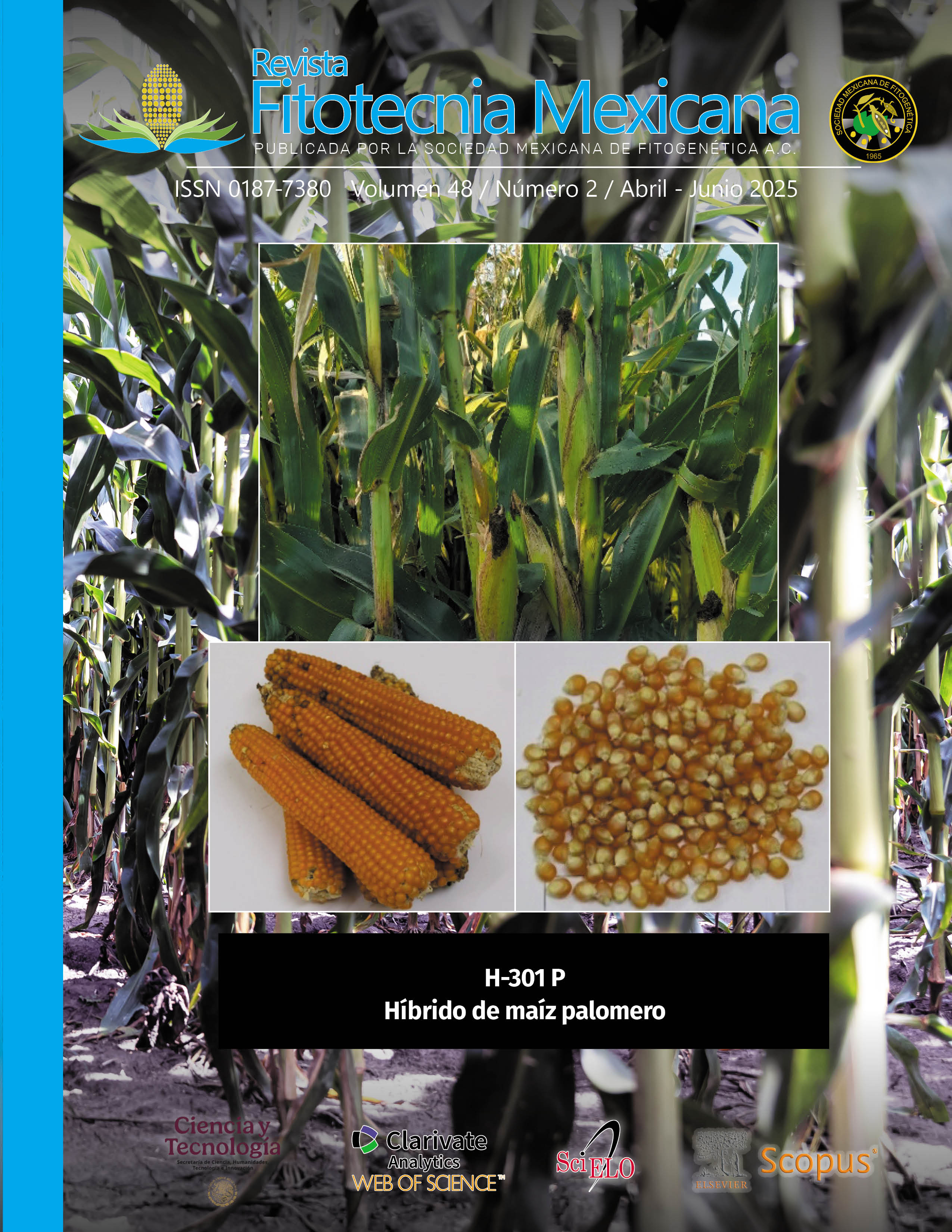SUPPLEMENTAL LIGHT AND NIGHTTIME TEMPERATURE MODIFY SEEDLING GROWTH, AND FLOWER AND FRUIT PRODUCTION IN TOMATO
Main Article Content
Abstract
Tomato (Solanum lycopersicum L.) is the most widely grown vegetable under greenhouse in Mexico. The objective of this research was to study the effects of applying supplemental light and low night temperatures to enhance the process of photosynthesis in seedlings and stimulate the setting of a higher number of floral primordia and fruits in tomato plants topped above the third inflorescence. The seedlings were grown in trays with 128 cavities, each with a volume of 46 cm³. Six treatments were tested, resulting from the combination of two supplemental light conditions (no light and light at a density of 175 μmol of photons m-2 s-1) and three levels of night temperature (18 ± 2°C) as the greenhouse ambient temperature, and 11 ± 1 and 15 ± 1 °C inside automated cooling chambers, applied during the sensitive phase of floral initiation (from 17 to 34 days after sowing) of the first three inflorescences. The experimental design was a randomized complete block with four replications. Transplanting was performed at 35 days after sowing into cultivation beds at a density of 6 plants m-2. Each plant was topped two leaves above the third cluster. Morphological variables and total chlorophyll content were measured in seedlings, as well as the number of flowers and fruits per plant at maturity. Data were subjected to analysis of variance and Tukey mean comparisons (P ≤ 0.05). Supplemental light was found to improve seedling quality at transplantation but not the number of flowers or fruits per plant. When seedlings were exposed to 15 °C at night during floral initiation, in addition to improving seedling quality, a larger number of flowers and fruits per plant was promoted; in contrast, at a night temperature of 11 °C, seedling growth and number of flowers decreased.

